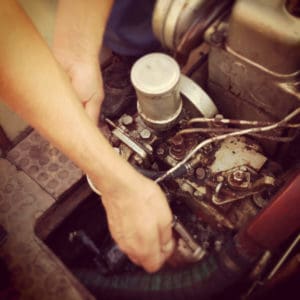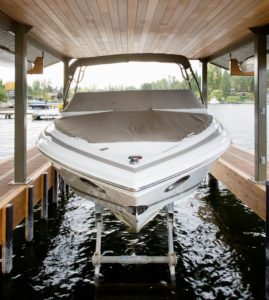Antifouling your boat is an integral part of maintaining your vessel. It may not be the most glamourous or fun job, but it’s an important one.
Whether you’ve noticed a buildup of debris on your hull or you’re ready to pull your boat out of the water for annual antifouling treatment, you should know the ins and outs of antifouling before you get started. It’s a multi-step process that does require a little know-how, but it’s also not too difficult if you know what you’re doing.
What is Antifouling and Why is it Important?
Antifouling serves several purposes. First of all, it prevents the accumulation of growth on the hull of your boat. Hardshell and weed accumulation are not only bad for your boat’s hull, but they can also slow your vessel down and cost you more in fuel over the long term. Antifouling prevents this accumulation and subsequently prevents marine life from being inadvertently spread as your boat travels.
Antifouling paint contains biocides that control the growth of algae and other marine life on the underside of your boat. The antifouling paint that you choose will depend on the type of material your boat is made from.
Here’s your DIY guide to antifouling your boat to help you keep your watercraft in top shape for the sailing season.
Your DIY Boat Antifouling Guide
Slip Your Vessel
Once you’ve determined that it’s time to antifoul your boat, you’ll need to slip the vessel. Once your boat is out of the water, you can assess whether you’ll need to apply a new coat of antifouling paint or whether you need to strip back the old, damaged antifoul layers before proceeding.
Prepare Your Boat
Before you can paint your boat, you’ll need to clean it with fresh water to knock off any loose debris. Then, scrape off any stubborn residue to examine the state of the antifoul paint below it.
Previous layers of antifouling paint lose their ability to repel marine organisms. Even if the paint on your hull looks fine, if it’s collecting lots of barnacles or other growth, it’s time to reapply antifoul paint.
If the outermost layer of paint seems to be in decent condition, you can simply apply a new coat of antifouling paint. However, if there are chips or cracks in the topcoat, or if it’s visibly flaking off, you’ll need to strip off the damaged paint before applying a new coat.
Remove the outer layer of paint by hand or by blasting it off with a high-powered blast. Check with the shipyard to see if they offer blasting services to help speed up the process.
Examine Your Boat’s Bottom
Antifouling allows you to check your boat’s bottom over thoroughly for any signs of wear and tear or damage. Look for cracks, pitting, or holes that need to be repaired. It might be a good time to have your shipwright take a look at the boat to make sure there are no other problems.
Many boat owners find that antifouling is an excellent time to take care of other boat maintenance that needs to be done. You may want to have a marine mechanic look at your boat while it’s out of the water to make sure that there are no other issues that need to be addressed.
Applying the Antifouling Paint
Follow the manufacturer’s instructions for applying the paint. Your boat’s bottom should be completely dry before you begin painting. Even if you haven’t had to strip off any old layers of antifouling, you should wet-sand the bottom of the boat, rinse it, and then allow it to dry before applying the new paint.
You should apply two coats of antifouling paint to your boat. If you use a roller to hand-paint the vessel, you need to be careful to get as smooth a finish as possible. Rough patches will encourage slime growth, so a smooth surface is your goal.
If possible, use an airless spray system to apply the antifouling paint. Spraying will ensure a smooth, even coverage and cut down on time it takes to paint your boat. Take your time, though, because a bad antifouling job will mean that you’ll either have to repaint sooner or risk wasting fuel with a slow, dragging boat.
Extending the Life of Your Antifouling
Once applied, antifouling can last for about a year before it needs to be reapplied. The antifouling paint will keep weeds and barnacles away, but you’ll still be prone to getting slime and mud on the hull of your boat. These should be removed gently by wiping with a cloth or sponge to help prolong the life of the antifouling paint.
Let Us Help With Your Antifouling Needs
Corleone Marina at the Balmain Marina has one of the last remaining slipways in Sydney Harbour. Our marina services include the best antifouling and hull and boat repairs. We also offer Do-It-Yourself slip way usage on the weekends. We know you just want to get out and enjoy your boat, so let us help with those routine sailing maintenance issues so you can focus on enjoying your vessel.
Contact us today to find out more about our excellent marina services in four stunning Sydney locations. We’ll take good care of you and your boat so you can relax and enjoy sailing worry-free.









